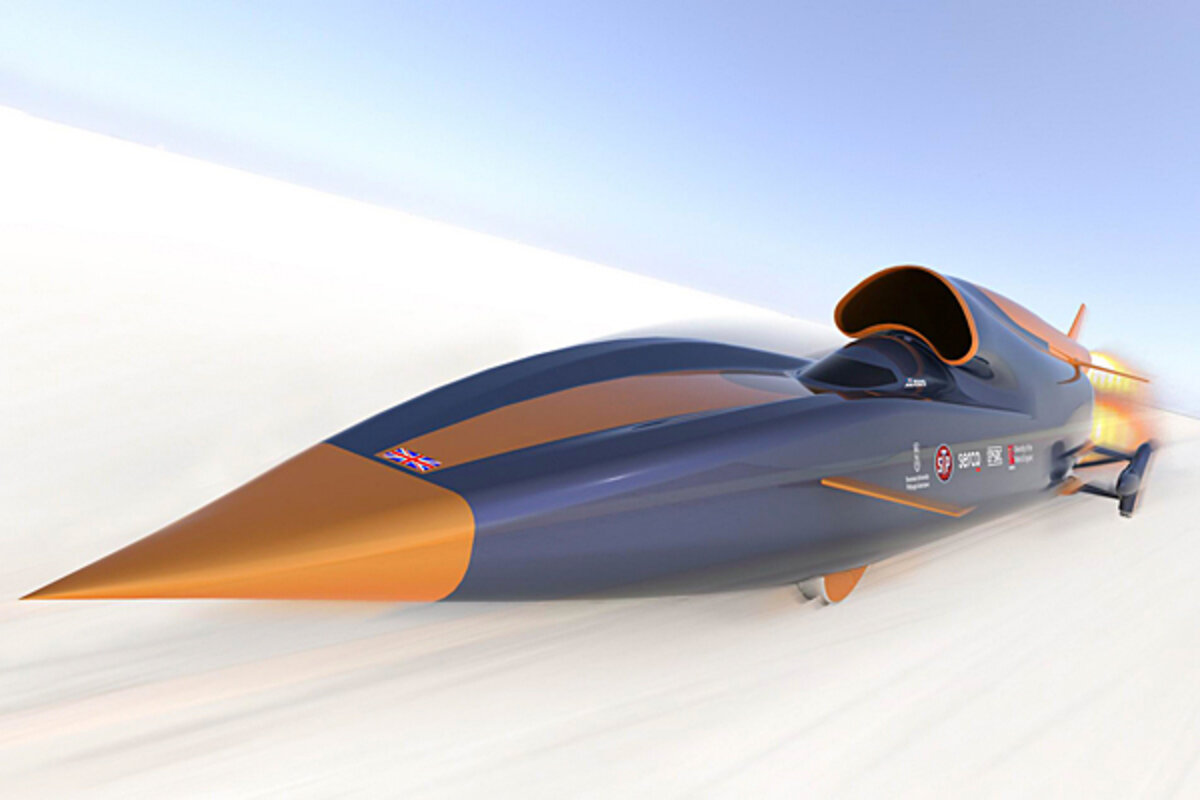Supersonic car at Farnborough Air Show: science class at Mach speed
Loading...
From 0 to 1,000 miles per hour in 40 seconds. From Los Angeles to New York City in 2-1/2 hours. It’s a bird. It’s a plane. No, it’s a… car?
It’s the world’s fastest car, actually. And along with getting from Point A to Point B faster than the speed of sound, it is sparking students’ interest in math and science.
Though untested, the Bloodhound SSC unveiled a life-size, 42-foot-long model this week at the Farnborough International Air Show in Britain. Perhaps more important, the car is part of an initiative to bring real-life math and science into the classroom and inspire a new generation of engineers.
Bringing velocity to 3,471 schools
project director Richard Noble says the idea was born out of concern that most of Britain’s mathematicians and scientists were between 40 and 60 years old.
“You’ve also got the problem big-time in the US, you know,” says Dr. Noble in a telephone interview from the Air Show, referencing how American students lag behind many of their international peers in math and science.
The Bloodhound Education Program aims to change that. It brings concepts such as velocity and acceleration into the classroom through questions geared around the supersonic car. With vetting from Britain's National Foundation for Educational Research and collaboration from California-based Intel Corp., the program is already taught in 30 countries worldwide, including the United States and Canada, and throughout Britain in 3,471 primary and secondary schools, 229 colleges, and 40 universities.
“When you get your math lessons from a 1,000-m.p.h. car, it’s much more exciting,” says Bloodhound project spokesman Julius Tipler. “They’re bringing the science lessons to life.”
Hooked on engineering
Noble himself is an example of how exciting interactions with math and science can put young students on the path toward engineering. When he was 5 years old, he says, his father took him to see British racing motorist John Cobb attempt to break the water speed record at Scotland's Loch Ness in 1952. Noble, a Scot, was hooked for life.
“I had to build a jet car,” he recalls, and in 1997 he teamed up with test driver Andy Green to set the land speed record at 763 m.p.h. in the rocket-powered ThrustSSC. It still holds the record.
“We thought we probably had time to do one more of these,” says Noble, now 64 years old.
Attracting sponsors
The Bloodhound is powered by two engines: a Eurofighter Typhoon jet engine sends it to 100 m.p.h., and then a hybrid rocket kicks in to send it 10 times faster. British rocket scientist designed the hybrid rocket.
Its appearance at the Farnborough International Air Show has already attracted three new sponsors for the Bloodhound project. Money is coming in and interest is ramping up. And with the world’s leading rocket scientists on the project, Bloodhound is planning to challenge the world record in early 2012.
“We know we have the right power,” says Mr. Tipler, the spokesman. “We know we have the right shape. We’ve done all the math. We know we can do it.”
Related:





